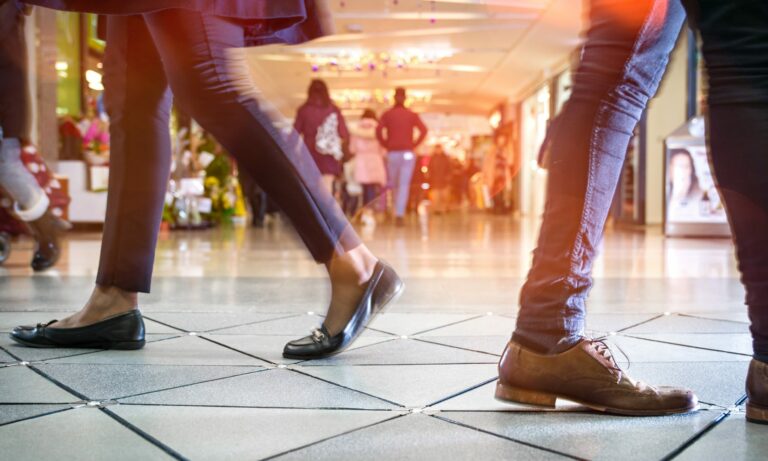Footfall across UK retail destinations worsened last month to -14.2% below the 2019 level, wiping out all the gains made since April, according to the latest figures from Springboard. It was down -17% in high streets, -18.6% in shopping centres and -3.5% in retail parks.
However, on a more positive note, July was two months post the anniversary of the end of Lockdown 3, and UK footfall was +15.6% higher than in 2021 versus +14.2% above 2021 in June.
Some of the weakening in consumer activity from 2019 in July was due to the extreme heatwave in the third week of the month, when footfall dipped to -16.4% below the 2019 level from -12.9% in the week before. Inevitably this meant that the uplift from 2021 also narrowed in the third week; to +11.3% from +18.2% in the previous week.
The Springboard data revealed that a north-south divide is emerging in terms of the recovery in footfall, indicating the impact of the proportionately greater burden of inflation that is being felt in the North.
Between January and July footfall increased from month to month by an average of +1.8% in Greater London compared with just +0.4% in the North and Yorkshire, and in July footfall in Greater London was +27.4% above the 2021 level versus just +8.9% in North and Yorkshire, +7.2% in Northern Ireland and +9.2% in Scotland. This variation in the level of recovery is also reflected in the difference in footfall from 2019; in Greater London footfall in July was -10.2% below 2019 versus -14.4% below in North and Yorkshire and -17.7% below in Scotland.
Springboard says the north-south divide in footfall recovery is not a recent trend and stretches back to July 2021, however, the extent of the divide has increased significantly over recent months and by July the gain in footfall from 2021 of +8.9% in the North and Yorkshire was only around one-third of the +27.4% gain in Greater London.
Diane Wehrle, marketing and insights director at Springboard, said: “Whilst footfall remains lower than the 2019 level, the trend from month to month in 2022 over the seven months to the end of July averaged +1% versus an average of -0.5% over the pre-Covid decade, demonstrating the demand from shoppers for in-store shopping.
“Looking forward towards the remainder of the year, we would normally expect footfall to peak in August and then dip in September as the school summer break ends. However, in light of the increasing strain on household budgets as a consequence of inflation, this year we are anticipating that in August footfall will plateau or even drop away marginally by circa -1% from July, followed by a decline of around -3% over the month between August and September.”


